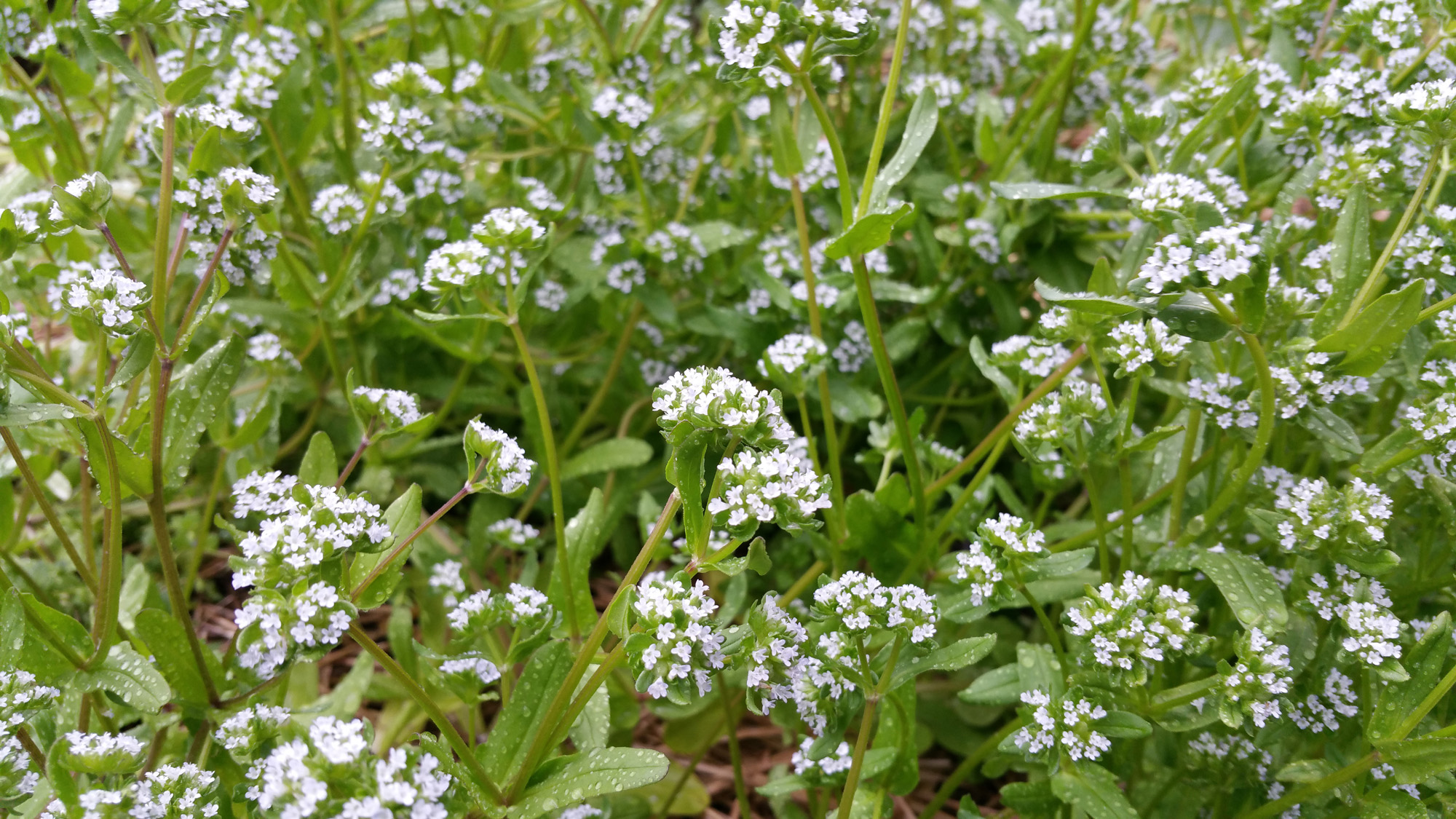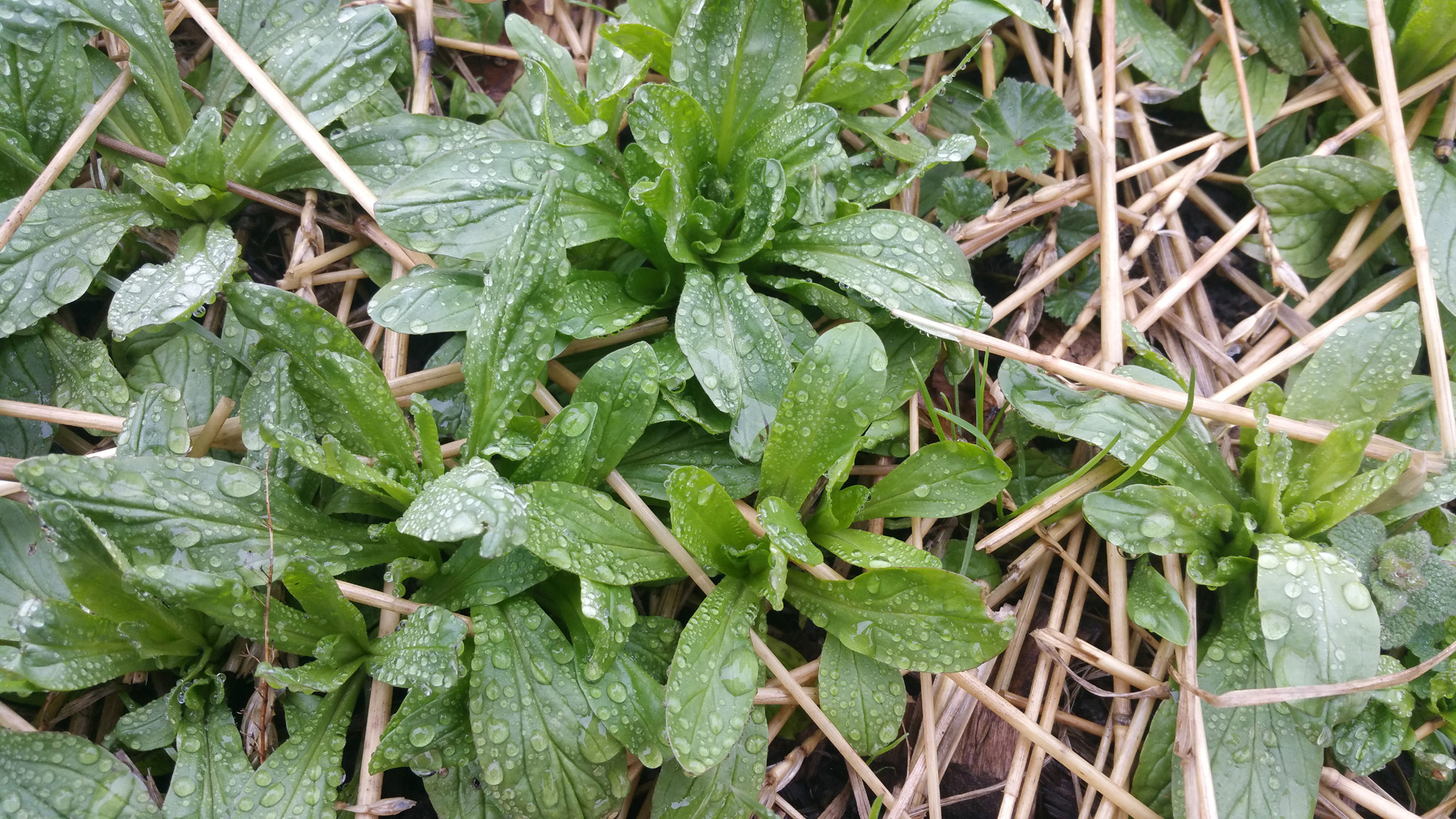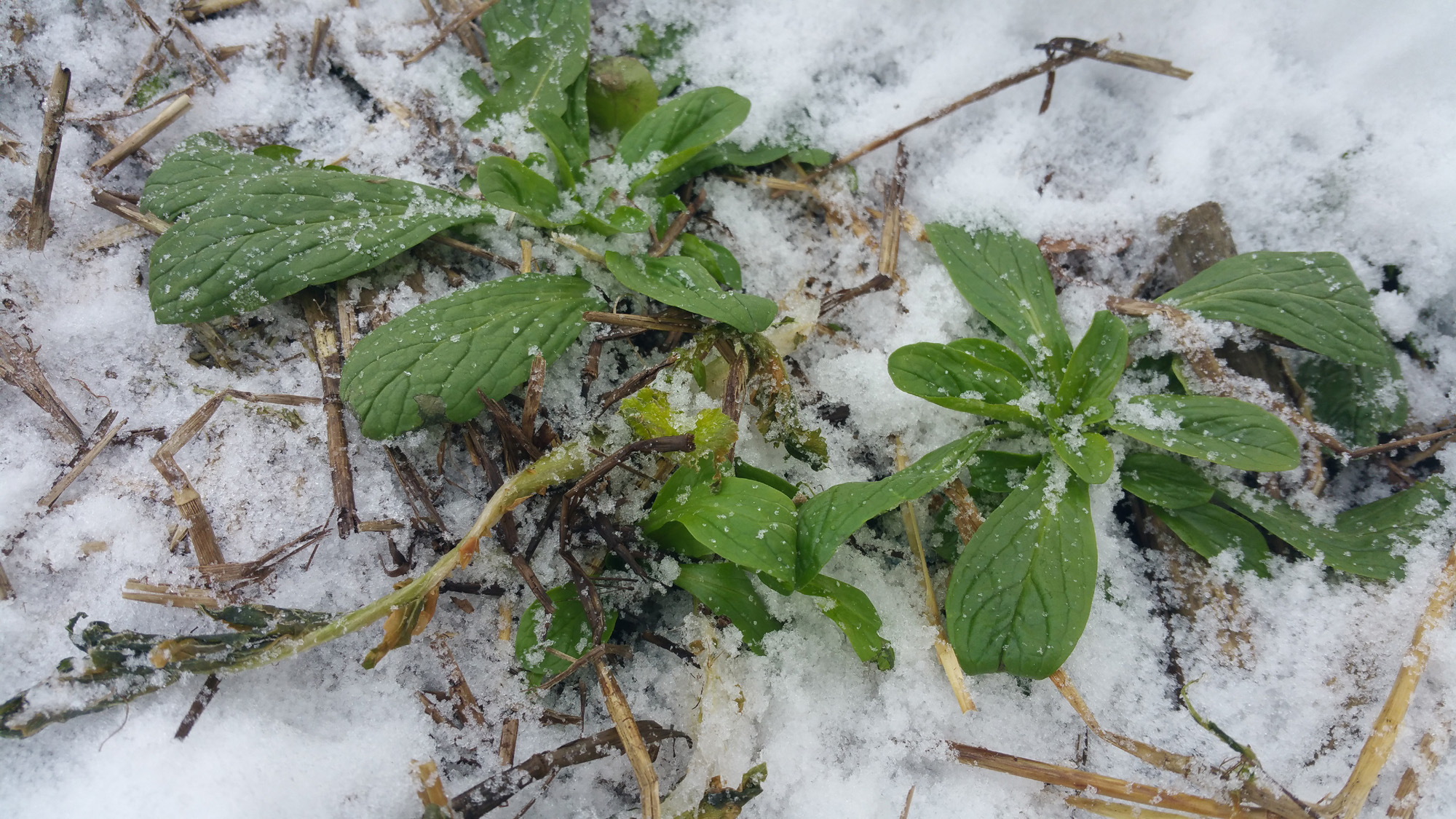by Ann McCulloh, contributing editor
Once, upon a time, there was a little plant that slept all summer, sprouted in the fall, and grew green and contented underneath the snow. Come the warm spring sun it flowered, scattered its seed freely and went to sleep until cool weather woke it up again. The lucky princess in whose garden it flourished, never had to plant it, or do much of anything but give it a bed of straw, and pick it for salads in the dark days of winter.
Mache (aka lamb’s lettuce, corn salad, Rapunzel, doucette, Nussler) is the most familiar name for Valeriana locusta, a delicate and delicious salad green that really does follow this topsy-turvy, through-the looking-glass schedule. I first planted the seed in springtime, in 2012, I think. It came up, promptly flowered
 then went to seed, and I proceeded to forget all about it until the next September, when little green rosettes started poking through my straw mulch.
then went to seed, and I proceeded to forget all about it until the next September, when little green rosettes started poking through my straw mulch.
I kept an eye on it as it stayed green and grew a bit, while frosts became more prevalent. Then the first snow fell, and I assumed the worst. Sometime the next January I ventured out to the garden patch and noticed the green rosettes looked spritely. And larger. I pushed away some snow and clipped a few of them.
Mache (pronounced mahsh) has a delicate, nutty or even floral, flavor that invites dressing with walnut or hazelnut oil and sherry vinegar. It’s compatible with most anything. The French, who probably grow the most mache commercially, often dress it with hazelnut oil and vinegar, pair it with endive, frisee, thinly-sliced radishes or beets, and chop hardboiled egg or ham over it. The 4” spoon-shaped leaves have a spinach-like texture that holds onto just the right amount of vinaigrette. I like it with orange segments, avocado slices, citrus dressing and a sprinkle of violets! Cooked briefly like spinach, it makes a decent omelet filling. Nice in a sandwich wrap, too!
Citrus Dressing for Winter/Spring Mache Salad:
1/3 cup fresh-squeezed orange juice
2 tablespoons balsamic or other good vinegar
1 Tablespoon olive, hazelnut or avocado oil
Salt and fresh ground pepper to taste
It’s surprising that self-sowing mache hasn’t caught on more widely with gardeners and gourmets in this country. For me, it is the closest thing to an effortless garden crop. But best of all, I can harvest tasty garden-fresh greens from January through April, and I haven’t bought a packet of seeds since that first purchase in 2012.
Mache
corn salad, lamb’s lettuce, Rapunzel salad (Valeriana locusta) Doucette, raiponce, Nussler
Europe, Africa, Western Asia
Specialty of Nantes
Vitamin C, B6, beta-carotene, iron, potassium, copper manganese
More iron than spinach
Delicate flavor, nutty or even floral, to me. Dress with walnut oil and sherry vinegar or a mustard dressing
Orange and avocado with orange dressing
Roasted beets and endive or frisee
Mix with other salad greens
Rosette of tender, spoonshaped leaves
Tiny whole plants, add a delicate crunch
Can be cooked like spinach and used to stuff omelets or pastry
Tea sandwich filling, with thinly sliced radishes
Lazy gardener alert
Germinates when soils are 55 to 68 degrees, sun, moist soil, mulch
Young plants sprout in September, remain green and succulent all winter under light straw mulch, really burgeon in March and April, start to bloom in May and seed themselves prolifically in June. Seed lies dormant until cooler fall weather. Then the cycle restarts.

